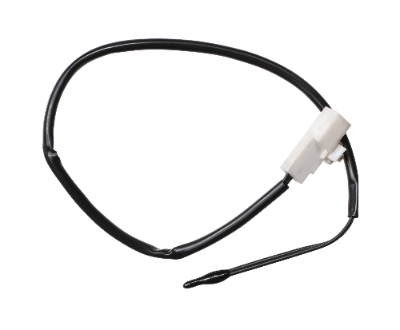What Is a Thermistor Sensor?

A thermistor sensor, short for “thermally sensitive resistor,” is an electronic component that exhibits a significant change in resistance in response to temperature variations.
These sensors enable temperature measurement by monitoring the resistance of the component. Thermistor sensors are manufactured using a mixture of various metals and can operate within a temperature range of approximately -50°C to 150°C.
Uses of Thermistor Sensors
Due to their affordability, temperature-sensing capabilities, compact size, and durability, thermistor sensors find applications in a wide array of fields:
1. Medical Equipment: Thermistor sensors are used in medical devices for temperature monitoring.
2. Automobiles: They play a crucial role in measuring the temperature of the engine and outside air, ensuring optimal engine combustion and performance.
3. Office Automation (OA) Equipment: Thermistor sensors are employed in various office equipment, including printers and copiers, for temperature control and monitoring.
4. Housing Equipment: These sensors are used in household appliances like water heaters and cooking appliances to measure and control temperature.
5. Industrial Equipment: Thermistor sensors contribute to temperature control in industrial machinery and equipment.
6. **Information Equipment:** They are used in data centers and servers for temperature monitoring and control.
7. General Household Appliances: Thermistor sensors can be found in various household appliances for temperature measurement and control.
For example, air conditioning systems use these sensors in both indoor and outdoor units to maintain optimal temperature conditions. In automobiles, they help control engine temperature and monitor external air temperature. In water heaters, they regulate the water temperature coming out of faucets.
Principle of Thermistor Sensors
Thermistors are made from a mixture of materials, with different types available:
– NTC (Negative Temperature Coefficient) Thermistors: Their resistance decreases as temperature increases, and they are commonly used for temperature measurement and compensation circuits.
– PTC (Positive Temperature Coefficient) Thermistors: These thermistors are used to protect devices from overcurrents rather than for temperature measurement. Their resistance value increases significantly near a specific temperature as temperature rises.
– CTR (Current-Time Resistor) Thermistors: Similar to NTC thermistors, their resistance decreases as temperature rises, but their resistance value decreases significantly at higher temperatures.
Other Information on Thermistors
When using thermistor sensors in electrical circuits, they are typically integrated into the circuit with a constant supply voltage and fixed resistors. As the resistance of thermistor sensors changes with temperature, variations in temperature lead to changes in current flow and voltage across the resistor.
These voltage variations can be read by microcontrollers or other devices with analog-to-digital converter (ADC) capabilities. The combination of thermistor sensors and peripheral circuits often involves connecting a pull-down resistor of 1 kilo-ohm or 10 kilo-ohm to a constant voltage source (e.g., 5 V DC or 3.3 V DC) or connecting a pull-down resistor between the thermistor sensor and ground (GND).
It’s essential to choose appropriate resistor values to prevent excessive heat generation due to increased current flow through the resistor, which can result in inaccurate measurements. In some cases, a known resistor is combined with the thermistor sensor to measure resistance values accurately.